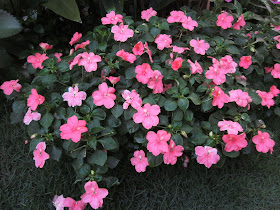Dracaena marginata (Madagascar Dragon Tree, Red Edged Dracaena) is in much demand for landscaping as its red margins provide the vibrant colour. It is easily propagated from cuttings and thus can be used extensively.

This pair of Yellow Vented Bulbuls (Pycnonotus goiavier) perched prettily on a curved stem of a Dracaena marginata

A few cuttings of different heights grown in a container makes a lovely ornamental specimen for enhancing indoor decors.
Grown under full sunshine, it takes on orangy hues. This long stem dipped down as it was not supported, triggering two side shoots at the top of the greatest curvature.
I saw this pair of Yellow Vented Bulbuls on a ledge enjoying an overview of the garden. When they were done with that they flew off ...

... to perch on this curved Dracaena stem.
When they have enough of this view, one of the pair flew off followed by the other.

and landed on the same ledge.

This variety of Dracaena marginata has more green to it. Just like the red variety, it makes a good indoor plant too.
A grasshopper crawled up a blade of leaf.

When it reached a part that is horizontal, it climbed up to the one above it.

When it reached a part that is horizontal, it climbed up to the one above it.
It then had a soft hammock to rest and dilly-dally away its time. This was very reminiscent of Aesop's tale of 'The Grasshopper and the Ant'.
















































